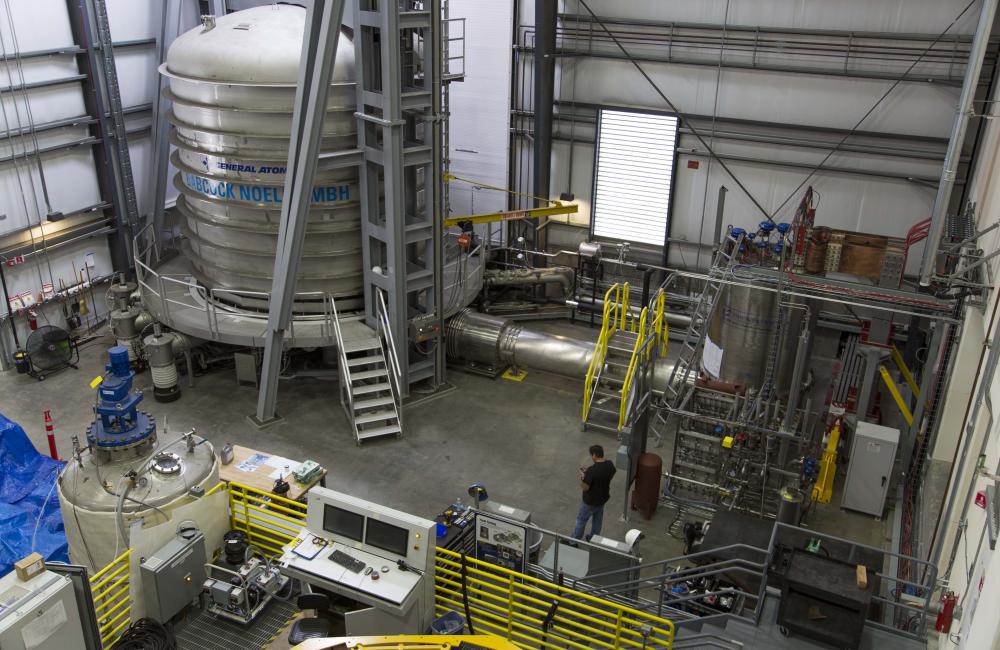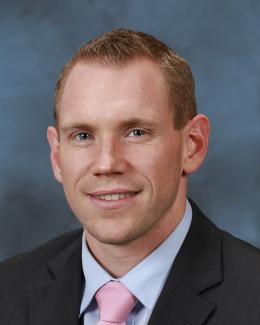US ITER collaborated with partners around the world to build the General Atomics Magnet Technologies Center in Poway, California. Credit: General Atomics
Experts at Oak Ridge National Laboratory are quickening the deployment of next-generation nuclear energy technology by collaborating closely with industry partners.
"Industry turns to ORNL for scientific and engineering expertise and world-class facilities that can’t easily be replicated," said Kathy McCarthy, Associate Laboratory Director of the Fusion and Fission Energy and Science Directorate. "Here our researchers share some of the impacts and success of their current industry partnerships."
First 3D-printed component installed and operating in a nuclear power reactor
This spring, four 3D-printed fuel assembly brackets were successfully installed and are now under routine operating conditions at the Tennessee Valley Authority’s Browns Ferry Nuclear Plant Unit 2 in Athens, Alabama. The components are expected to remain in the reactor for six years, with routine inspections. Produced at ORNL’s Manufacturing Demonstration Facility, they were developed in collaboration with Framatome, TVA, and the DOE Office of Nuclear Energy–funded Transformational Challenge Reactor (TCR) program based at ORNL.
“It took all three vantage points – industry manufacturer, electric utility, and national laboratory – to make this milestone possible,” said Ben Betzler, TCR program director. “Through this collaboration we’ve shown that it is indeed possible to deliver a 3D-printed component qualified to operate in what is one of the nation’s most highly regulated industries.”
The current focus of the TCR program is to further mature and demonstrate industry-ready technology informed by advanced manufacturing, artificial intelligence, integrated sensing and deployment of a digital platform for informed certification of components.
Infusing innovation in fusion energy technology
Researchers in our directorate are leading 13 projects selected for DOE’s INFUSE (Innovation Network for Fusion Energy) initiative.
“INFUSE allows our researchers to focus on specific hurdles that private fusion companies face that require the assistance of a national lab,” said Dennis Youchison, program manager of INFUSE. “The companies gain access to expertise, tools, and facilities that they couldn’t find elsewhere to evolve their technology to the next level.”.
One INFUSE project nearing completion is divertor component testing by an ORNL team led by FFESD’s Travis Gray that is partnering with Commonwealth Fusion Systems in Cambridge, Massachusetts.
“Our project is testing materials using an electron beam to generate those extreme heat fluxes to find the best design for the divertor inside the tokamak,” said Gray.
Another project, with TAE Technologies and an ORNL team lead by Elijah Martin, involves using doppler-free saturation spectroscopy for magnetic and electric field measurements in the plasma.
“We are creating a tool that will help us answer questions about what is the best material to use, what is the best configuration, what should we change to maximize performance,” Martin said.
International collaborations boost US ITER’s success
Perhaps one of our most visible collaborations is between US ITER and its partners, which yielded new magnet testing capabilities at the General Atomics Magnet Technologies Center in Poway, California.
“It was a huge, collaborative, world-wide effort,” said central solenoid systems manager David Everitt. “People from all over the world worked together, with many vendors building many pieces that were integrated to create a superconducting magnet test facility.”
Contributors included Siemens, Linde, and Babcock Noel in Germany; the Institute of Plasma Physics of the Chinese Academy of Sciences/ITER China; and Alpha Scientific and General Atomics in the United States.
The result is a test station with a large cryostat test chamber, a 900-watt helium liquefier, a 50,000-amp 10-volt power supply, a switchyard vacuum circuit breaker that can quickly dump all the current out of a magnet coil in 7 seconds, and a feeder system that converts the electricity from a normal copper bus running at room temperature to a superconductor at the other end operating at 4.5 degrees Kelvin.
~ Compiled by Amy Reed





